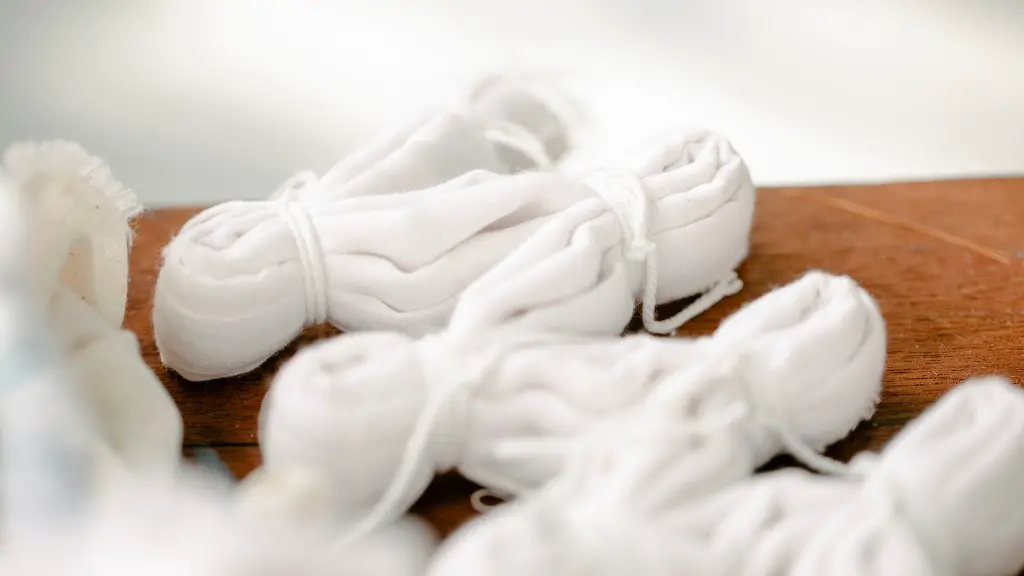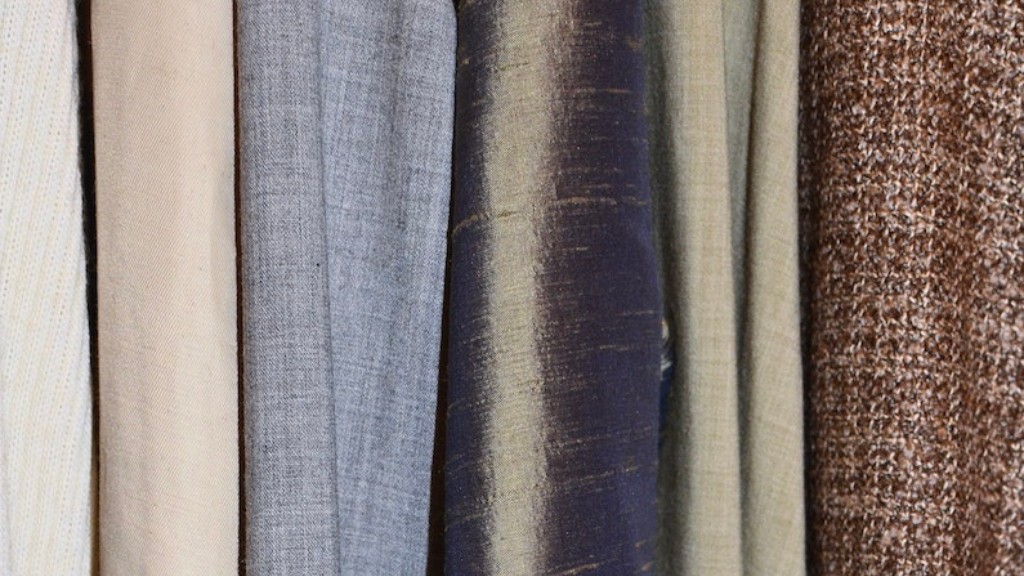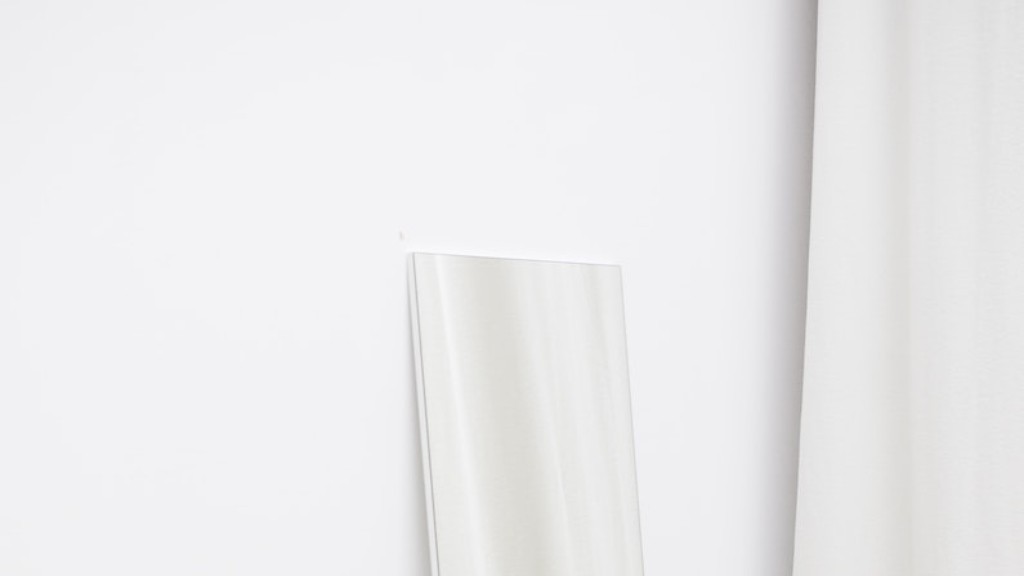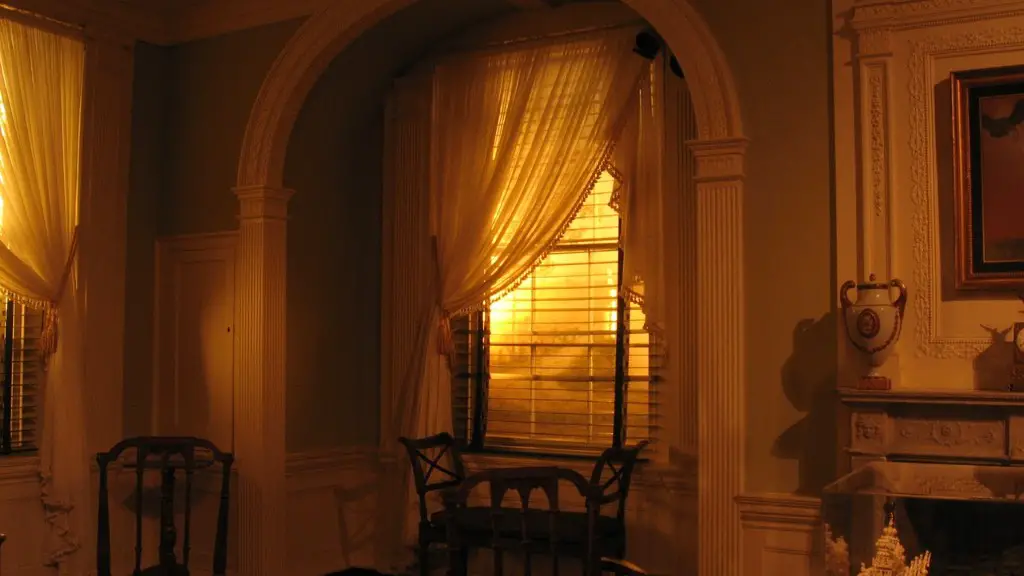Valance curtains are a type of window treatment that can be used to add style and privacy to your home. They are typically made from a light-weight fabric and are hung from a rod or scarf. Valance curtains can be made from a variety of fabrics, including sheer, lace, or even velvet.
Valance curtains are a type of window treatment that can be used to add a decorative touch to a room. They are typically made from a light-weight fabric and are hung from a rod that is mounted above the window. Valance curtains can be made from a variety of fabrics and come in a variety of colors and patterns.
How many yards of fabric do I need for a valance?
To make a self-lined gathered valance, you will need the following:
-Cut fabric width
-Width of chosen fabric
-Cut fabric length
To calculate the amount of fabric required, follow these steps:
1. Divide the cut fabric width by the width of the chosen fabric. This will give you the number of widths required.
2. Multiply that number by the cut fabric length. This will give you the total length of fabric required.
3. Divide the result by 36. This will give you the number of yards of fabric required.
And cut the fabric Step four measure a 1-inch hem on both sides of the valence pin the fabric.
How much fabric do I need for valance curtains
A plain valance is a simple way to add a touch of elegance to any window. To make a plain valance, first measure the width of your window. Multiply this width by 1-1/2. The length of the valance should be 1/4 the window height plus one inch.
First, fold this in just a quarter of an inch. And we’re going to sew along that whole seam all the way around. More
What is the standard depth of a valance?
This is another rule of thumb that decorators use when it comes to window valances. The depth of the valance should be 1/4 of the overall window height, plus 1 inch. So, for example, a 60-inch tall window would call for a 16-inch deep valance, while a 48-inch window would call for a valance that is about 13 inches deep.
When it comes to window valances, size definitely matters! use this handy chart to determine how many valances you’ll need for your windows, based on their width.
For windows measuring:
30 inches – 39 inches: 2 valances
40 inches – 48 inches: 2-3 valances
49 inches – 72 inches: 3-4 valances
73 inches – 96 inches: 4-5 valances
What are the three types of valance?
A valance is a piece of fabric that is used to cover the top of a window. It can be used to add color, pattern, and texture to a room, and can be made from a variety of materials. The three most common types of valances are gathered, scarf, and straight.
Gathered valances are the most traditional type, and are made by bunching excess fabric at the top of the window. They are usually decorated with a variety of trimmings, such as tassels, fringe, or beads.
Scarf valances are made from a single piece of fabric that is draped over the top of the window. They can be hung in a variety of ways, and can be used to add color or pattern to a room.
Straight valances are the simplest type of valance, and are made from a single piece of fabric that is hung straight across the top of the window. They are a good choice for those who want a minimalist look, and can be made from a variety of materials.
So this is a drapery valance on a rod. Next to me here, I have another drapery valance. This is again on a rod, but it’s a little bit different. This one is pleated. And so, as you can see, it has these little pleats all along the top. And that’s what gives it a little bit of a different look.
Do valances need to be lined
A top treatment is a decorative element that is hung above a window, typically above blinds or curtains. A valance is a type of top treatment that is shorter in length and typically has a decorative element at the top, such as fringe or tassels. Both valances and top treatments should have a lining for best results. A lining will extend the life of the treatment and create a better-looking final product.
This curtain rod arrangement will give you more flexibility in adjusting the height, width, and projection of your curtains. The top rod is for the valance with swags and tails, and the lower rod is for the two curtain panels. This will allow you to create a custom look for your windows.
How wide should a valance hem be?
When considering the width of a bottom hem on a ready-made product, it is usually 2 or 3 inches. However, custom bottom hems are always 4 inches, and sometimes 5 inches, to create a more quality look. Additionally, the side hems on a ready-made curtain are usually 1/2 or 1 inch in width, whereas single hems on custom curtains are almost always 1 1/2 inches in width.
A valance should traditionally cover the top 2–6 inches (51–152 cm) of your window frame. The rest of the fabric can cover the wall above the window or the ceiling. If there isn’t a huge gap between the top of the window and the ceiling, hang the valance 1–2 inches (25–51 cm) from the top of the ceiling.
Is it easy to make valance
You can easily sew your own valance with some basic sewing materials and a little sewing knowledge. You will also need a sewing machine to sew a valance. Try making your own valance for a unique window treatment in any room of your home.
A balloon valance is a type of valance that is full and puffy, giving it a soft and romantic look. It is commonly used as an over drapery, but can also be used as a stand-alone valance. When using it as an over drapery, it is important to pair it with a light and airy fabric to create a cohesive look.
What is the difference between a cornice and a valance?
A valance is a piece of fabric that is used to cover the top of a window. A cornice is a piece of wood that is used to cover the top of a window. Valances add a softer accent to a room.
This is a rule of thumb that is used by many decorators in order to create a harmonious and aesthetically pleasing look in a room. The window valance depth should be 1/4 of the overall window height, plus 1 inch. This means that a 60-inch tall window would need a 16-inch deep valance, while a 48-inch window would need a valance that is around 13 inches deep. By following this rule of thumb, you can create a level of visual interest and balance in your room that will be truly stunning.
Are valances outdated
Many people believe that valances can make a home look dated or out of style. If you have a valance that you feel falls into this category, it may be time to remove it in favor of a cleaner look.
If you’re looking to buy curtains online, make sure to add at least 6 inches to the width of your window frame for each curtain rod you use. This will ensure that your curtains have a full, rich look. For valance only or panel only curtains, you’ll only need one curtain rod, so be sure to add at least 6 inches (3 inches on each side of the window frame) to your order.
Final Words
1. Choose a fabric for your valance curtains. A light-colored fabric will allow more light into the room, while a dark fabric will provide more privacy.
2. Cut the fabric to the desired size, using scissors or a rotary cutter.
3. Sew the fabric together using a sewing machine or needle and thread.
4. Attach the valance to the curtain rod using hooks, clips, or ties.
Valance curtains are a great way to add a touch of style and sophistication to your home. They can be used to cover up unsightly view from outside, or to simply add a bit of extra privacy. Sewing valance curtains is not difficult, but there are a few things you will need to know before getting started. Follow these steps and you will have beautiful valance curtains in no time.





